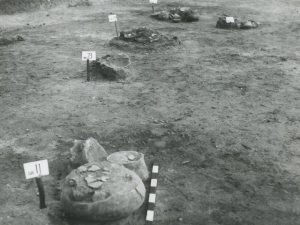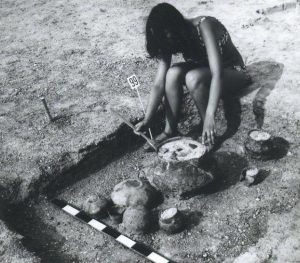40 years after archaeologists discovered burials containing casting molds for axes, razors, and other tools, the finds will be properly researched and published. The 3000-year-old finds from Legnica, south-western Poland, are said to be unique in Europe.

The excavations that brought to light these unique finds were conducted in the 1970s prior to construction of a sewage treatment plant on an area covering nearly 2 hectares. During the process 168 graves were found, that belonged to a cemetery dated to the Late Bronze Age, between 1100-700 BC. The artefacts found during the excavations were documented but the results of excavations were never published. Now, thanks to a grant from the Ministry of Culture and National Heritage, archaeologists and historians are to publish these results.


From archaeological point of view the site and the finds are unique, due to the discovery of three graves of the supposed metallurgists. Within the graves of these individuals casting molds made of earthenware and stone were found. These artefacts were meant to produce various tools and weapons such as razors, axe-heads, and spear-heads. According to the archaeologists this is one of few such sites in Europe.


(after Muzeum Miedzi w Legnicy & TVN24)